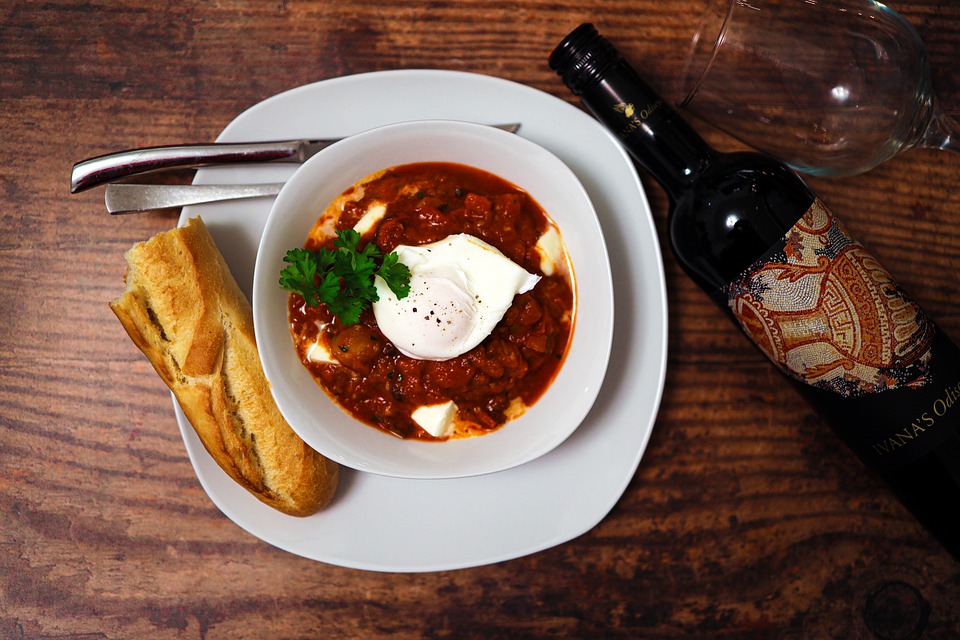The premise of this article is that the art of pairing food with wine is highly subjective. There
aren’t right or wrong answers, and you should always experiment and pay attention to what you like. Some general rules can help you better navigate this matter, and when in doubt, you should simply pop a bottle of your favorite Sparkling. You’ll hardly go wrong!
One of the best tips on how to pair food and wine with success is to start thinking about wine as one of the main ingredients on the table.
When approaching this subject, it’s essential to distinguish between your favorite drinking wine and your best food pairing ally. You might genuinely enjoy your classic example of California Pinot Noir (as we do!). Still, the riper fruit, higher alcohol, and lack of acidity might declare our ‘Tuesday night buddy’ as unfit for the food challenge.
One of the critical factors for the success of your pairings revolves around the natural acidity present in your wine. This is why some of us struggle to have a glass of Chianti Classico by itself and prefer to enjoy it with beef carpaccio or pasta al pomodoro. Most classic Old-world wines tend to be higher in acidity, lower in alcohol, less ripe, and more restrained. However, everything changes when food shows up on the table.
That sharp acidity all of a sudden becomes our friend, fighting to cut through the richness of the food while cleansing our palate. The lower alcohol allows for the ingredients in the dish to shine through without getting overpowered.
The rule of thumb is that ‘the acidity present in your wine should match or exceed the one present in your food.
Now that we understand the ‘Why?’ better, we can dive into this list of 10 simple rules and a few bullet-proof pairings.
Rules:
1. Your wine should match or exceed the acidity of your food
2. Your wine should be sweeter than your food
3. Match the intensity of flavor of your food with the intensity of your wine
4. Tannic wines taste less tannic with richer food and proteins
5. Salty food makes sweet wines taste sweeter
6. Pair sweeter wines with spicy foods
7. Don’t pair tannic wines with fatty fish
8. Don’t pair bitter foods with bitter wines (e.g., Sancerre, Pinot Grigio)
9. Sweetness in food accentuate the perception of bitterness, sourness, and astringency in wine
10. Have fun and drink more Sparkling wine!
Bullet-proof pairings:
Goat cheese:
• Sauvignon Blanc – Sancerre, Loire Valley – France
• Cabernet Franc – Chinon, Loire valley – France
French Fries:
• Champagne – Champagne, France
• Franciacorta – Lombardia, Italy
Charcuterie:
• Gamay – Beaujolais (Cru), France
• Barbera – Piemonte, Italy
• Valpolicella – Superiore o Ripasso – Veneto, Italy
Oysters:
• Muscadet Sèvre-et-Maine – Loire Valley, France
• Chablis – Chablis, France
Sushi:
Most versatile:
• Grüner Veltliner – Austria
When spicy:
• Riesling – Kabinett or Spätlese from Germany
When in tempura:
• Albariño – Rias Baixas, Spain
Seared Salmon:
When simple:
• Pinot noir with a chill – Burgundy, France
When cooked with herbs and citrus:
• Sauvignon Blanc – Loire Valley, France
When saucy (butter):
• Chardonnay with a whisper of oak – Burgundy, France or Margaret River, Australia
Hamburgers:
When classic:
• Cabernet – from your favorite place as long as medium – bodied
When cheesy:
• Gamay – Beaujolais (Cru), France
When spicy:
• Syrah – Washington State, USA and Northern Rhône, France
When fun:
• Lambrusco – Emilia Romagna, Italy
Mushroom risotto with truffle:
• Riesling (off-dry or semi-sweet) – Germany
• Barolo or Langhe Nebbiolo – Italy, Piemonte

